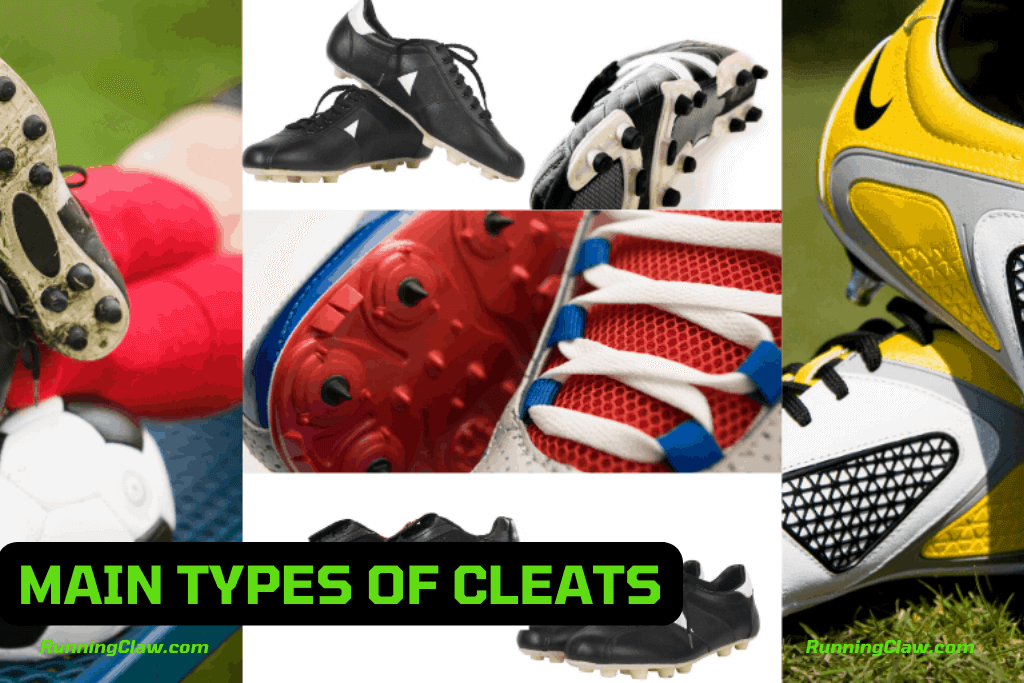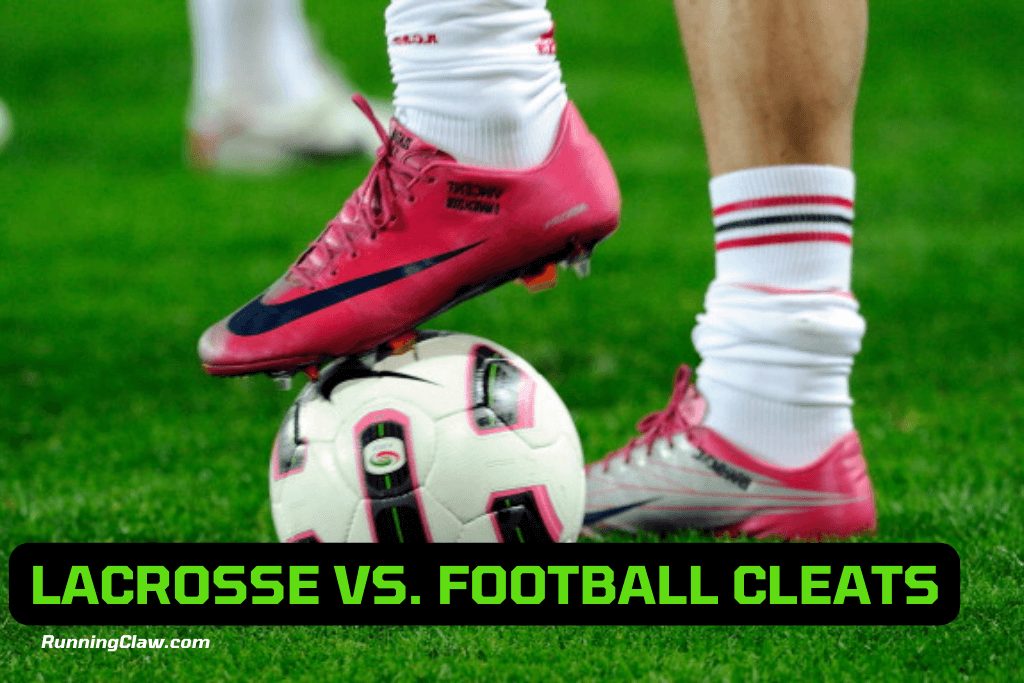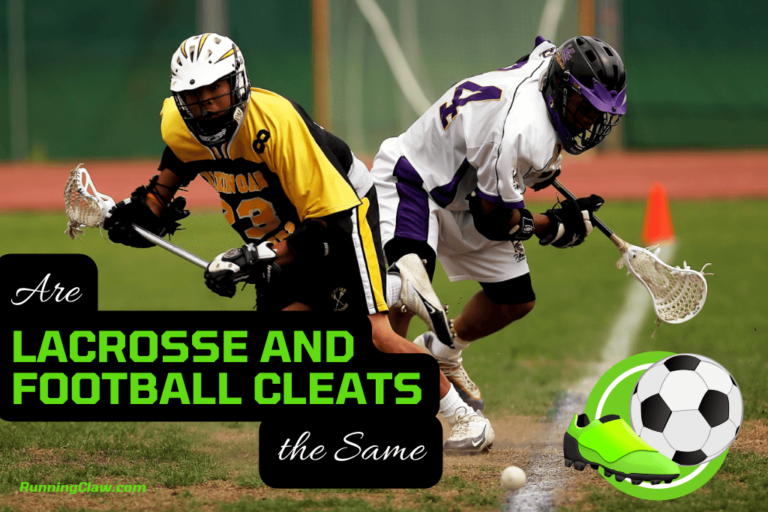As many athletes have discovered, both lacrosse and football cleats offer protection to players in their respective sports. But are they the same, or do they have different features that make them suitable for each sport? The answer lies in the details of each type of cleat.
The first major difference between lacrosse and football cleats is the nature of their construction.
Football cleats typically feature molded rubber studs on the bottom that provide superior traction on grassy fields or turf. In contrast, lacrosse cleats often include metal spikes designed to grip more slippery surfaces like turf.
Additionally, football cleats tend to be heavier than those used for lacrosse because they need more stability due to the aggressive movements required during play.
Wearing cleats is mandatory when participating in sports, either lacrosse or football.
Because cleats enhance your gripping ability and prevent you from getting injured. Also, they help you to perform better.
Can You Wear Lacrosse Cleats In a Football Game?

The simple answer to this question is yes, you can wear lacrosse cleats in a football game. The main reason behind this is that the two sports require similar types of movement from their athletes, so the same type of shoe could work for both.
However, some differences between the two must be considered when selecting a pair of shoes for football games.
For example: Lacrosse cleats tend to be lighter than regular football cleats due to their design and construction materials.
Main Types Of Cleats:

The most basic cleat is a molded rubber sole that provides comfort, flexibility, and maximum grip on hard ground surfaces like grass, turf, and artificial turf fields. This type of cleat is usually not recommended for wet or muddy fields as it can be slippery when wet.
Other popular types of cleats include detachable studs, which can be replaced when worn down, and screw-in studs that provide added grip in soft or muddy ground conditions. Let’s take a look on types of cleats which include:
- Metal Cleats
- Molded Cleats
- Football Cleats
- Baseball Cleats
- Lacrosse Cleats
All of the types have some differences. However, in this article, I will discuss whether lacrosse and football cleats are the same or different. Let’s jump into it;
Football Cleats:

The types of cleats used in playing football are known as Football Cleats.
The nubs on football cleats are made of plastic or rubber, which helps protect the player from getting hurt. So that players can feel the ball better.
Football cleats are made of a light, more flexible material than other materials.
The material at the top of the cleat is made to last longer so players can kick over and over again.
As a result of the need for players to adapt to various playing surfaces, football cleats come with studs of varying lengths.
The various positions that can be played on the field require players of varying lengths, and these lengths correspond to those positions.
The cleat has a shape that is conical and blunt, and it is relatively short.
Types of Football Cleats:
- Firm Ground
- Soft Ground
- Turf or Artificial Ground
- Indoor
Lacrosse Cleats:

Lacrosse cleats are very similar to those in other sports, such as baseball, football, and soccer. These shoes have traction spikes attached to the outside of the shoe’s sole. These spikes can be made of plastic or metal.
Lacrosse cleats protect players from slipping and potentially injuring themselves when running or making sharp cuts on the field.
Types of Lacrosse Cleats:
Types of Lacrosse Cleats:
- Low-Cut
- High-Cut
- Mid-Cut
High-top lacrosse cleats are designed to provide extra ankle support during games or practices. These models come with a high-cut upper that extends up the ankle for added stability when making quick turns or lateral movements on the field.
Mid-cut designs offer less coverage but still provide plenty of support and stability. They also tend to be lighter than high-top cleats, making them ideal for players looking to boost their speed or agility performance. The materials used in lacrosse cleats usually include fiber, leather, and polyethylene.
Lacrosse Vs. Football Cleats

Nearly all sports use cleats because they give players a better grip and allow them to dig deeper into the ground during sharp turns. Even though most cleats have a similar appearance, they differ from sport to sport.
Despite almost having the same appearance, there are many differences between lacrosse and soccer cleats.
Size:
Both types of cleats have different sizes. In most cases, it is seen that lacrosse cleats are shorter than football cleats.
Weight:
As far as the weight is concerned, both cleats also differ here. The lacrosse cleats are lighter than the football cleats.
Spikes:
The spikes are one of the critical distinctions between lacrosse and soccer cleats. The lacrosse cleats differ from soccer cleats because they have an additional front spike and a high ankle spike. The players can take turns more efficiently as a result of this.
Additionally, it has been observed that soccer cleats have fewer spikes than lacrosse cleats. In addition, compared to lacrosse cleats, soccer cleats have shallower cleats.
The placement of the soccer cleats is also straight, which promotes good cornering and some slippage.
Performance:
Various people have different viewpoints on how well lacrosse and soccer cleats perform. Lacrosse cleats perform better than soccer cleats, but the opposite is also said.
It depends on the usage. Using football cleats while playing football, not lacrosse, will give you better performance, and vice versa.
Similarities:
Football and lacrosse cleats have various stud options because they handle both dry turf and wet, dangerous ground. Both sports have cleats with molded studs integrated into the soles and detachable studs, enabling players to swap them out.
Cleats with leather or synthetic uppers are worn for both sports.
Conclusion:
All cleats look similar, but not all cleats are similar. Different sports have different and specific cleats for different purposes. So, always go with the cleats that are explicitly required for your game.
You may also like:
How to Clean White Cleats?
How Much do Soccer Cleats Cost?
Are Firm Ground Cleats Good For Turf?
How to Break in Leather Soccer Cleats?


